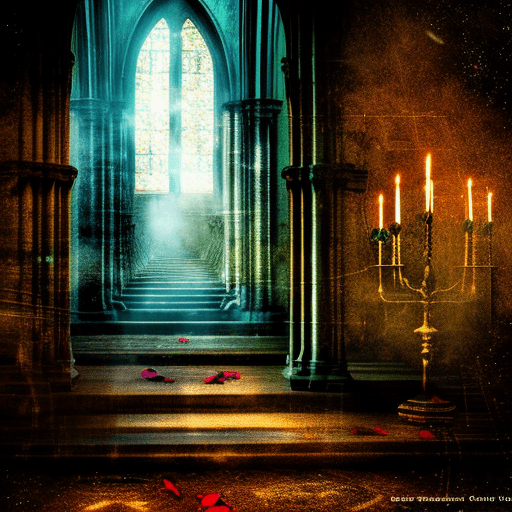The Name of the Rose: A Murder Mystery Set in a Medieval Monastery
In “The Name of the Rose” by Umberto Eco, a Franciscan friar named William of Baskerville arrives at a secluded Benedictine monastery in the 14th century to investigate a series of mysterious deaths. As he delves deeper into the complex web of secrets and forbidden knowledge within the monastery’s walls, William uncovers a dark conspiracy that threatens the very foundations of the Catholic Church. Set against the backdrop of a tumultuous period in history, this gripping murder mystery explores themes of religious fanaticism, intellectual curiosity, and the power of knowledge.
The Enigmatic Library and Forbidden Knowledge
At the heart of the monastery lies a labyrinthine library, a treasure trove of ancient manuscripts and forbidden knowledge. The library becomes a symbol of the power struggle between those who seek to control and suppress knowledge and those who believe in the importance of intellectual freedom. As William and his young apprentice, Adso, navigate the maze of books, they encounter a multitude of conflicting ideas and philosophies, reflecting the tensions of the time. The library becomes a microcosm of the wider world, where different ideologies clash and the pursuit of knowledge is both revered and feared.
A Series of Mysterious Deaths
As William investigates the deaths that have occurred within the monastery, he uncovers a pattern that suggests a deliberate act of murder. Each victim has been found with a book nearby, leading William to suspect that the killings are somehow connected to the forbidden knowledge contained within the library. As he delves deeper into the secrets of the monastery, he realizes that the murders are not only a reflection of the power struggles within the Church but also a manifestation of the darker aspects of human nature.
A Clash of Faith and Reason
“The Name of the Rose” explores the tension between faith and reason, as represented by the characters of William and the inquisitor Bernard Gui. While William is a proponent of logical thinking and scientific inquiry, Gui represents the dogmatic and authoritarian side of the Church. Their intellectual battles mirror the wider conflict between the medieval worldview and the emerging Renaissance ideals. Eco uses their debates to question the role of religion in society and to explore the limits of human understanding.
Key takeaways from “The Name of the Rose”:
- The pursuit of knowledge can be both enlightening and dangerous.
- Religious institutions have often sought to control and suppress knowledge.
- The clash between faith and reason has been a recurring theme throughout history.
- The power of books and ideas can shape the course of history.
- Human nature is a complex mix of light and darkness.
Memorable Quote from “The Name of the Rose”:
“Books are not made to be believed, but to be subjected to inquiry. When we consider a book, we mustn’t ask ourselves what it says but what it means.”
In “The Name of the Rose,” Umberto Eco weaves a rich tapestry of history, philosophy, and mystery. Through the character of William of Baskerville, he invites readers to question the nature of knowledge, the role of religion, and the power of ideas. This thought-provoking novel serves as a reminder that the pursuit of truth is a never-ending journey, and that the search for knowledge can lead to both enlightenment and darkness.












